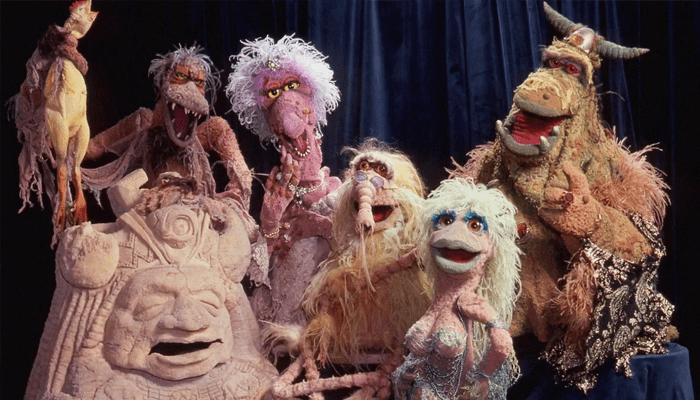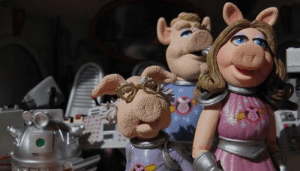When Jim Henson, the mind behind the beloved Muppets, was invited to contribute to the nascent stages of “Saturday Night Live” (SNL), it seemed like a collaboration that could only yield gold. Known for his revolutionary work in puppetry, Henson was a natural choice to add a unique flair to this groundbreaking sketch comedy series. Yet, the reality of this collaboration, encapsulated in the segment known as “The Land of Gorch,” proved to be an experiment that faced unexpected hurdles and ultimately, a short-lived presence on the show. In this post, we delve into the reasons behind its struggles, explore the dynamics between Henson’s creation and SNL’s early format, and discuss its contributions to the broader landscape of television comedy.
The Genesis of “The Land of Gorch”

In 1975, when “Saturday Night Live” first aired, it aimed to redefine television comedy. With its live format and irreverent tone, SNL was unlike anything audiences had seen. Lorne Michaels, the show’s creator, envisioned a multifaceted program that incorporated diverse comedic elements. Thus, Jim Henson was approached to integrate his puppetry talents into this pioneering concept.
“The Land of Gorch” was conceived as a series of sketches revolving around puppet characters living on a distant alien world. These characters, which included King Ploobis, Queen Peuta, and others, were distinctively different from the family-friendly Muppets. They were part of an adult-oriented narrative satirizing the quirks and complexities of human nature through the lens of a bizarre, extraterrestrial society.
Challenges and Discrepancies
From its inception, “The Land of Gorch” faced unique obstacles. The world of these Gorch characters was richly built, filled with an exhaustive lore reflective of Henson’s attention to detail. However, embedding this level of depth and narrative into a show like SNL, known for its quick, punchy sketches, was inherently challenging.
One of the primary hurdles arose from the format itself. The Muppet segments, unlike their SNL counterparts, were pre-recorded. This structural difference created a jarring disruption in the fluid, live-paced nature of the show. This divergence in pacing and delivery became an immediate challenge in blending Henson’s highly crafted world with SNL’s spontaneous comedic timing.
Divergence in Comedic Tone

Another critical aspect that impacted the reception of “The Land of Gorch” was its narrative style. The humor of “Gorch” differed significantly from the rest of SNL’s segments. While the series offered an intricately designed satirical universe, it struggled to achieve the same immediate comedic impact that live sketches delivered week after week.
Gorch’s humor, rooted in character-driven narratives and satire, was ambitious in its attempt to mix puppetry with adult themes. Yet, it often clashed with the sharp, biting satire that other SNL sketches provided. While the character flaws and darker undertones added a layer of complexity, these elements were difficult to convey effectively within the brief confines of sketch comedy.
Audience and Critical Reception
For the audiences and critics of that era, “The Land of Gorch” was a curious experiment but not a resounding success. Many viewers found the segments to be an awkward fit within the broader show, with some expressing confusion over its place in the comedic lineup. While appreciation for the unique puppetry and ambitious narrative was evident, these factors couldn’t overshadow the segments’ failure to integrate seamlessly with the rest of SNL’s content.
The disparity between familiar Muppet characters and the darker, flawed Gorch inhabitants also led to mixed receptions. Fans who expected the charm and warmth typically associated with Henson’s creations were met with an unanticipated divergence, further compounding the series’ reception challenges.
Phasing Out and Aftermath
As SNL moved through its first season, it became increasingly clear that the integration of “The Land of Gorch” was not aligning with the show’s direction. By the season’s conclusion, the sketches were gradually phased out. Henson’s decision to step back from SNL didn’t reflect personal failure but rather an insightful recognition of the experimental nature of television and the unpredictability of blending different art forms.
Despite its challenges, this foray did not deter Henson from forging ahead with other visionary projects. He continued to revolutionize puppeteering, achieving great success with “The Muppet Show” and other groundbreaking endeavors that followed.
The Enduring Legacy

“The Land of Gorch,” despite its short-lived nature, holds a vital place in television history. It represents an era of risk-taking, where creators like Henson were unafraid to explore new boundaries within the entertainment realm. It played a role in demonstrating the challenges and opportunities that come with integrating narrative complexity in a predominantly improvisational format like SNL.
This segment also underscores the broader narrative of Henson’s career—a relentless pursuit of storytelling innovation and artistic expression, even when faced with setbacks. By experimenting with “The Land of Gorch,” Henson tested the limits of what puppetry and television comedy could achieve when combined.
Conclusion
Jim Henson’s brief but memorable experiment with “The Land of Gorch” serves as a reminder of the experimental spirit that permeated the creative landscapes of the 1970s. While the sketches may not have struck the chord originally anticipated, they remain an intriguing part of both Henson’s legacy and SNL’s developmental history.
This venture into SNL was a testament to the visionary path of Jim Henson, illustrating his commitment to pushing the boundaries of entertainment. It stands today as a fascinating exploration into the complexities of comedic storytelling and the importance of adaptability and innovation in artistry. “The Land of Gorch” reflects both the evolution of Jim Henson as an artist and the enduring complexity involved in pioneering creative projects in an ever-evolving entertainment industry.




